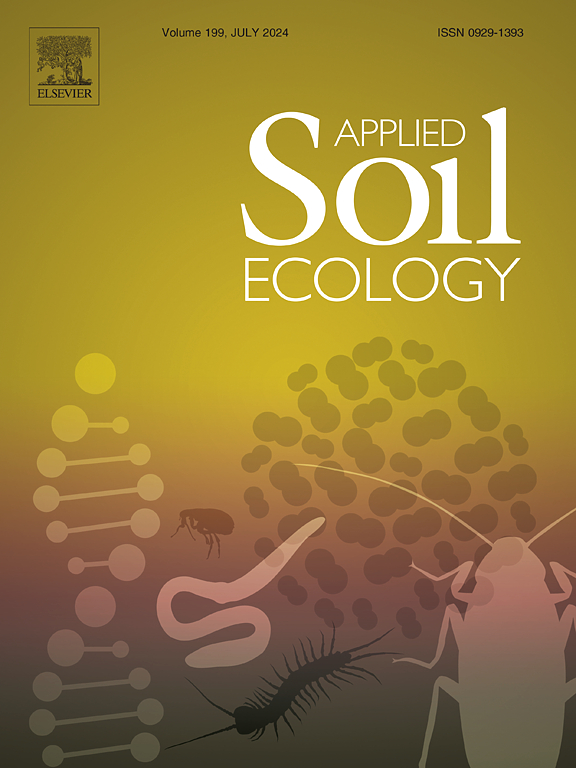Redundancy of microbial P mobilization in beech forest soils with contrasting P stock: A microbial dilution experiment
IF 4.8
2区 农林科学
Q1 SOIL SCIENCE
引用次数: 0
Abstract
Phosphorus (P) acquisition in forest ecosystems relies on litter cycling, but foliar P concentrations in beech forests are decreasing. This highlights the urgency to understand how soil microbes adapt to P limitations caused by environmental shifts. In this study, a novel approach combining 33P-wick labeling to trace litter-P recycling with a microbial dilution approach was used to study microbial P cycling associated with microbial biodiversity loss. Sterilized soils, re-inoculated with different dilutions of their native microbial communities were incubated with 33P-labeled beech litter for four weeks. The kinetics of acid phosphatase and the flux of 33P into different soil pools were determined. Carbon (C), nitrogen (N), and P, in soil microbial biomass and in extractable pools (e.g., Presin) were measured. The acid phosphatase activity decreased by 75–92 % with the dilution increase from 10−4 to 10−6 at the P-rich site, indicating a functional loss of P mobilization. The overall acid phosphatase activity was 1-fold higher at the P-deficient site than at the P-rich site, suggesting a high functional redundancy of microbial P mobilization. The recoveries of litter-derived 33P in soil microbial biomass (SMB) and in Presin were 5-fold and 2-fold higher for the P-deficient site than for the P-rich site throughout all dilutions, suggesting that the recycling of litter-P by SMB in the P-deficient soil is highly redundant as an intermediate reservoir. Our study confirms that the high functional redundancy of microbial P acquisition at a P-deficient forest site can maintain pivotal microbial acquisition processes for P uptake.
求助全文
约1分钟内获得全文
求助全文
来源期刊

Applied Soil Ecology
农林科学-土壤科学
CiteScore
9.70
自引率
4.20%
发文量
363
审稿时长
5.3 months
期刊介绍:
Applied Soil Ecology addresses the role of soil organisms and their interactions in relation to: sustainability and productivity, nutrient cycling and other soil processes, the maintenance of soil functions, the impact of human activities on soil ecosystems and bio(techno)logical control of soil-inhabiting pests, diseases and weeds.
 求助内容:
求助内容: 应助结果提醒方式:
应助结果提醒方式:


